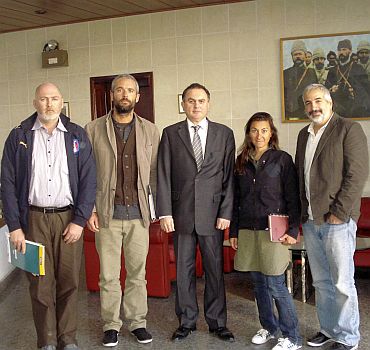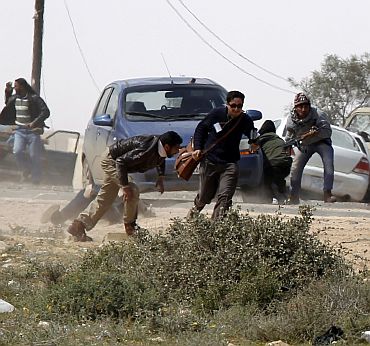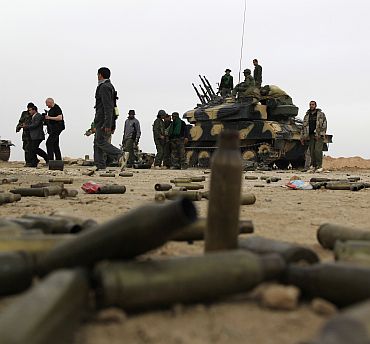
Four journalists working for the New York Times in Libya have recounted the horror of spending six days in the captivity of Muammar al-Gaddafi's security forces.
The journalists are Anthony Shadid, The Times's Beirut bureau chief, who has won two Pulitzer Prizes for international reporting, two photographers -- Tyler Hicks and Lynsey Addario -- who have extensive experience in war zones, and a reporter and videographer, Stephen Farrell.
They had been covering fighting between government and rebel forces near Ajdabiya when they decided that the battle had grown too dangerous for them to continue covering it safely. Their driver, however, inadvertently drove into a checkpoint manned by forces loyal to Gaddafi.
...

"I was yelling to the driver, 'Keep driving! Don't stop! Don't stop!' I knew that the consequences of being stopped would be very bad," Hicks recalled.
Hicks said that if the driver had tried to drive straight through, the vehicle certainly would have been fired on.
"I heard in Arabic, 'Shoot them'. And we all thought it was over," Shadid said.
"One of the others said: 'No, they're American. We can't shoot them'," Hicks added.
Hicks further said that they were told to empty their pockets and were ordered to lie down on the ground.

The soldiers grabbed whatever they could get their hands on to tie up the journalists: wire, an electrical cord from a home appliance, a scarf.
One removed Addario's shoes, pulled out the laces and used them to bind her ankles.
Then one punched her in the face and laughed.
"Then I started crying. And he was laughing more," the New York Times quoted Addario, as saying.
"There was a lot of groping. Every man who came in contact with us basically felt every inch of my body short of what was under my clothes," she added.

Their captors held them in Ajdabiya until the fighting with the rebels died down.
They landed in Tripoli last Thursday, where they were handed over to Libyan defense officials.
They were later transferred to a safe house, where they said they were treated well.
The four were finally turned over to Turkish diplomats on Monday afternoon, and were driven to the border with Tunisia.
According to the Committee to Protect Journalists, 13 journalists are either missing or in government custody.
The missing include four from Al-Jazeera, two from Agence France-Presse and one from Getty Images.